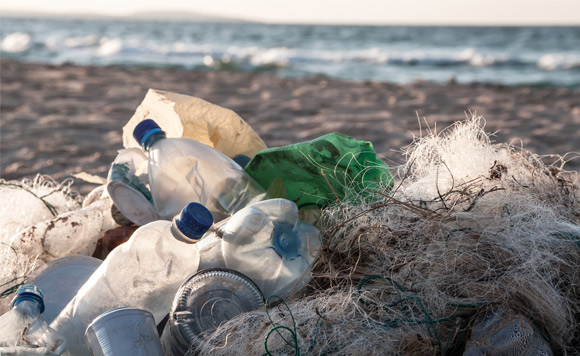– by Barbara Julian –
Is there anywhere on Earth – a morsel of flesh, a river or an ocean, a leaf or an insect – free of plastic micro-particles? Mass-produced since the 1940s (offspring of the oil industry) and legally dumped into the world’s oceans until 1988 (and illegally ever since), plastic is ubiquitous due to its incredible-shrinking ability: it never goes away. It only reduces into small pieces on which sea birds choke, and then microscopic pieces ingested by zooplankton and other life forms.
What we see isn’t what we get in the natural environment of southern Vancouver Island: we see beautiful mountains and woods, birds and rivers, but these are teeming with invisible laboratory-produced compounds toxic to wildlife.
The term “biodegradable” suggests that some plastics will eventually disappear into the natural substrate, but plastics are neither degradable nor biological. A marketer has only to splash the word “recycled” on a product to make us believe that somebody will eventually take care of the waste this item becomes. Researchers are working on incineration processes that might one day transmute plastic into harmless gases that could be captured for heat energy, but the technology eludes them.
Becoming microscopic only lets plastic penetrate more deeply into habitats and tissues, and according to researcher Charles Moore (Plastic Ocean, 2011), less than five percent is recycled in any case. Out of this is made more plastic, sustaining Earth’s total load. The solution lies squarely on the shoulders of the consumer. We are learning to think about greenhouse gases, but we have mostly ignored the danger of plastic, which Moore tells us is a greater threat to life on Earth than is climate change.
We buy mountains of plastic toys, garden chairs, kitchen equipment, canoes, skis, vinyl siding, shower curtains, pipes, hoses … things once made of natural materials. (Remember when toys were made of wood, metal or fabric, and no less fun to play with?)
Vancouver Islanders are good at cleaning beaches, the biggest event being the annual Great Canadian Shoreline Cleanup. In 2011, according to B.C.’s Ministry of Environment 66,127 kg of litter was collected from 1128 km of B.C. shoreline by 26,194 volunteers – but we have no way of ultimately disposing of it. Every bit of plastic ever produced still exists and, as far as we know, will exist after our great-grandchildren’s great-grandchildren have all been born and died.
Fishing line strangles marine animals, and bags and bottles get swept into massive ocean gyres such as the Great Pacific Garbage Patch, so removing these from beaches is important. However, ultimately we need to de-plasticize our homes. Everything we really need can be made with natural materials, and, if we wish it to, consumer demand could create an anti-plastic tsunami.




